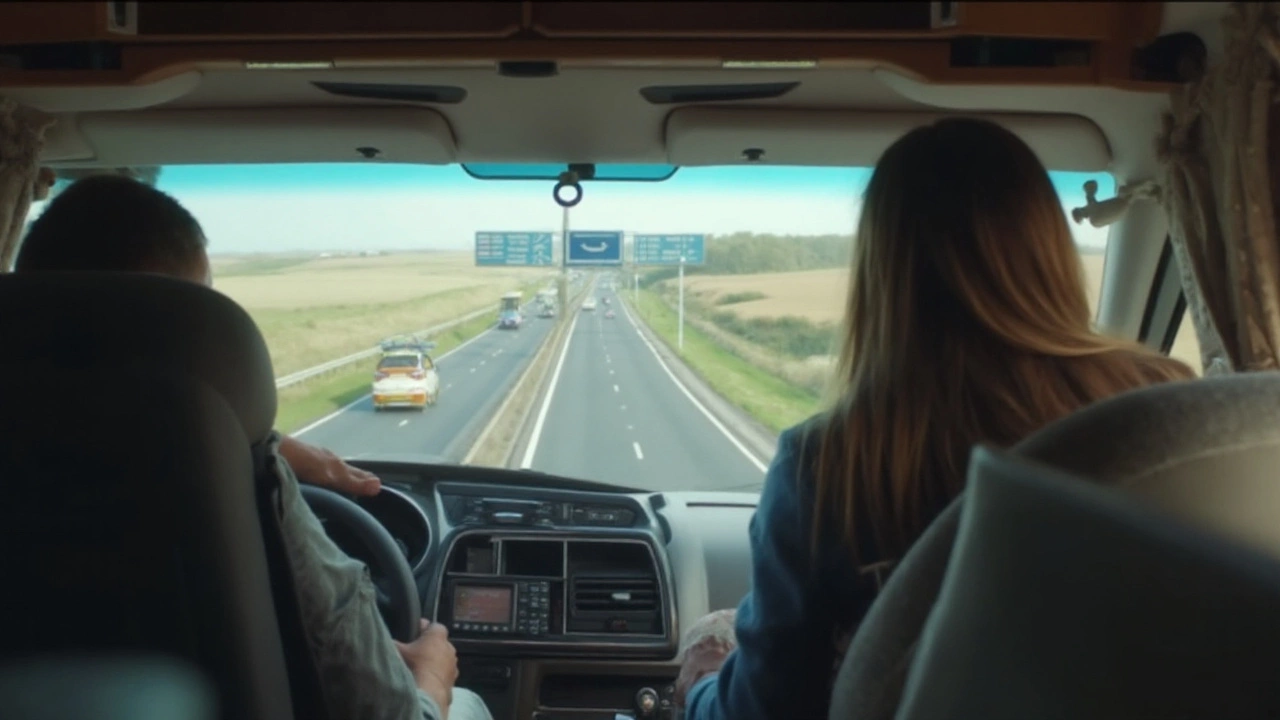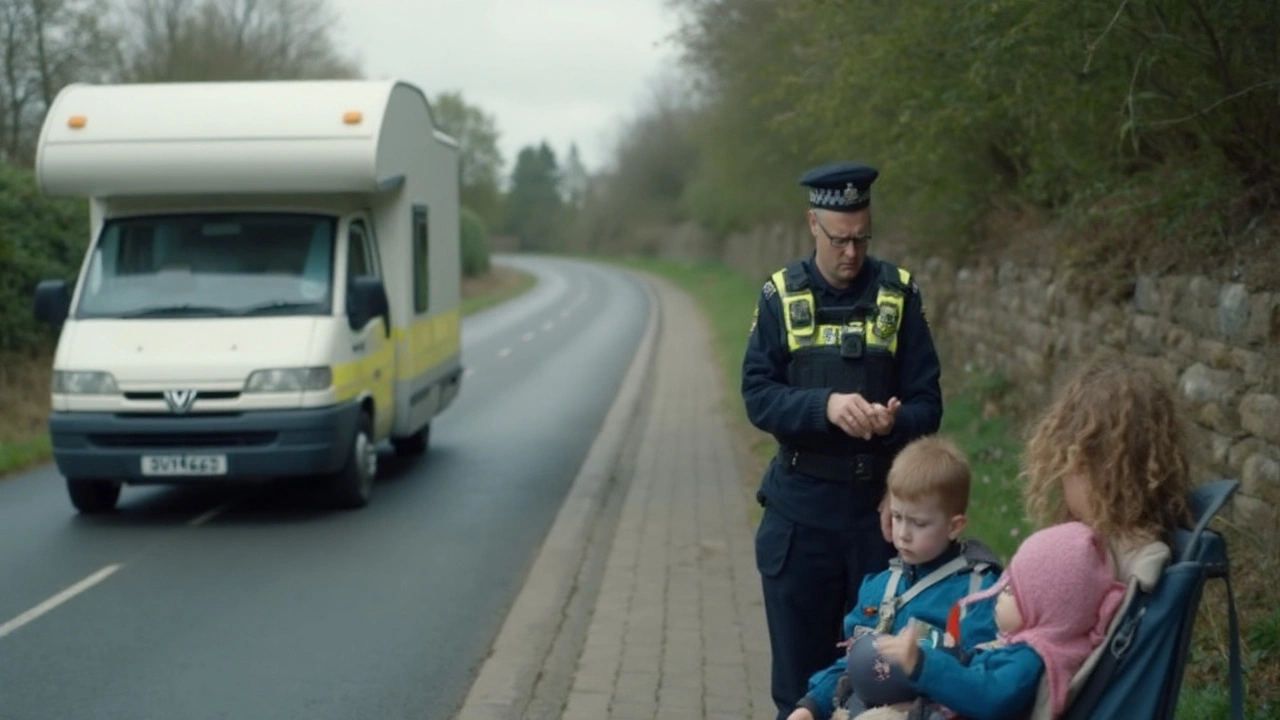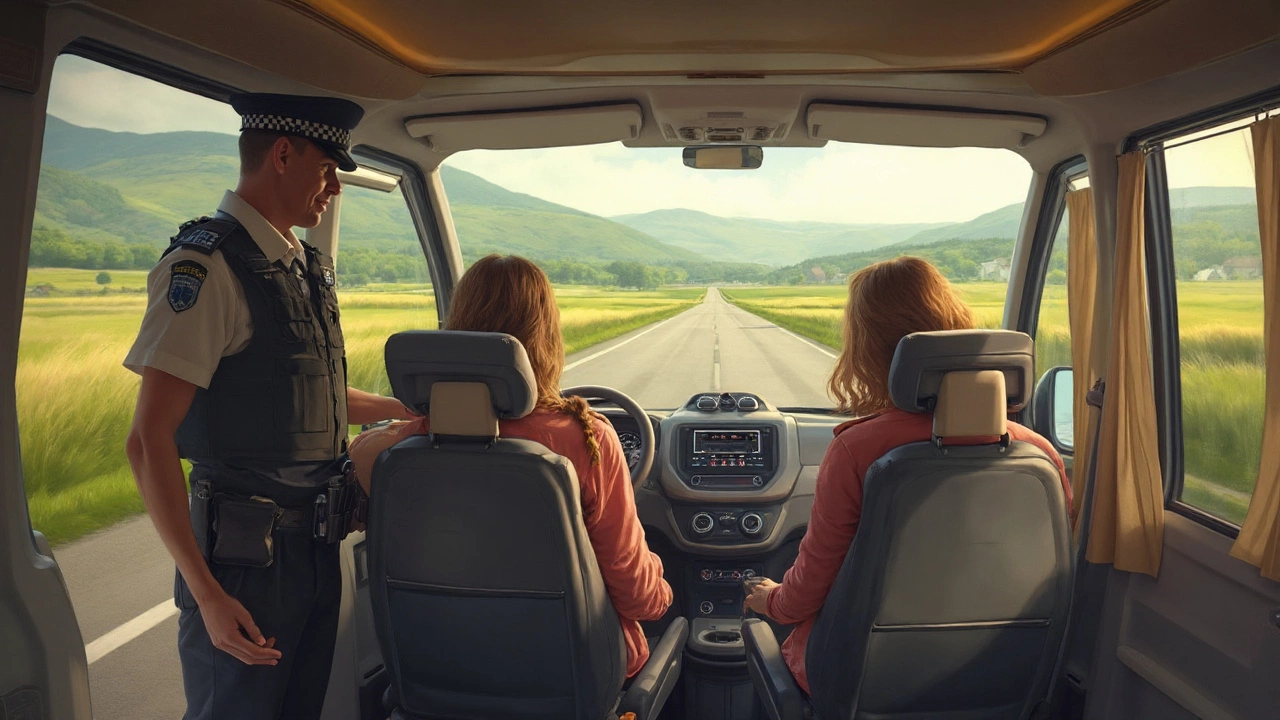Picture this: you’re cruising down the M5 in your shiny motorhome, weaving through rolling hills, your mate at the wheel, and the kettle calling your name. Is it legal to get up and brew a cuppa while the wheels are turning? It’s something loads of people have wondered, especially those new to the world of campervans. The idea sounds practical, even fun. But is it allowed—legally speaking? Here’s what you need to know, without any sugar-coating, and why it could cost you a lot more than a spilled cup of tea.
UK Law and Seatbelt Rules: What the Regulations Really Say
The UK doesn’t mess around when it comes to seatbelt regulations. Every motorhome registered after 2006 must have seatbelts fitted for every travel seat. If you’re moving—that’s driving, not parked—you’re required to sit with a belt fastened unless you have a specific medical exemption (and those are rare). This rule is laid out in the Road Vehicles (Construction and Use) Regulations 1986. Fancy legal-speak aside, if you’re not sitting and belted in while the motorhome is moving, you’re breaking the law.
What about older models? If your home-on-wheels was registered before 2006, only the front seats need belts. But—and this is a massive but—if there are seatbelts fitted anywhere, people using those seats must buckle up. The Highway Code (Rule 100) repeats this, clear as day. Passengers over 14 are responsible for themselves. For kids under 14, the driver is on the hook. This is why, if you’re ferrying children, using the proper child seat or booster is not just smart—it’s the law, right down to weight, height, and age brackets. Here’s a quick look at UK seatbelt basics for motorhomes:
| Vehicle Registration Date | Seatbelt Requirement |
|---|---|
| Before 1965 | Not required |
| 1965-2006 | Required in front seats; not always in rear |
| After 2006 | Required for every assigned seat |
Still, don’t get any smart ideas. Just because belts aren’t required in some rear seats doesn’t mean you can stroll about. Law aside, you don’t want to test the physics of a sudden stop—you only get one set of bones.
Enforcement is for real: get caught unbelted? You can get a £100 on-the-spot fine, or up to £500 if it goes to court. If you’re driving and the backseat cousin is making a sandwich while you roll down the motorway, the fine is yours (if it’s a child under 14), not theirs. With police using dash cams and traffic spot checks, thinking “no one will see” is now a weak line of defence.
Many new motorhome owners find regulations confusing, especially with seat layouts that convert dining areas into passenger seats. The golden rule? If a seat has a seatbelt, use it. If there’s no seatbelt, don’t travel in it while the vehicle is moving. Legal or not, if you have an accident and someone’s thrown around the interior, expect insurance headaches and maybe even criminal charges.

Sneaky Questions: What If You Move About for a Good Reason?
Let’s say you’re on a long drive, and grandma really needs to use the loo. Is it okay to unbuckle and shuffle down the corridor? The law still says no. Once the key turns and the motorhome moves, all travellers are expected to be seated and belted. Ambulances and coaches have their own exceptions, but private motorhomes do not. There’s no legal magic loophole for using the toilet or grabbing a drink. The only tiny gray area is if the vehicle is stuck in heavy, unmoving traffic: if you’re stationary, engine off, you can get up. As soon as you’re rolling—even at walking pace—you’re expected to be seated.
It’s not just about ticking boxes for insurance or avoiding fines; it’s a legit safety issue. Real stories back this up. In 2017, there was a case in Kent where a child hit the interior bulkhead after standing up to reach a toy. It wasn’t high speed—just 25 mph. The result? A broken arm, £500 fine, and a visit from social services. Change the details (different year, different county), but the outcome is usually the same. Even at slow speeds, loose bodies and sharp corners don’t mix. And in a crash, unbelted passengers in a motorhome can become dangerous projectiles, putting everyone at risk—including someone sitting up front and doing nothing wrong.
Insurance companies keep an eye on this, too. If you make a claim and it turns out someone was standing or walking when an accident happened, they might contest the payout. “Contributory negligence” is the key phrase: if you didn’t do everything you could to keep safe, expect them to reduce your claim—or refuse it altogether. And while the police might not pull you over for making a quick sandwich in the back, if you end up in a collision, the facts come out in the wash. It’s not just you who pays the price if things go wrong; you could face serious charges if someone gets hurt while technically under your supervision as a driver.
Want to play it smart? Use service stations, rest stops, or lay-bys. Pull over, turn off the engine, and only then unlock your freedom to roam, stretch, snack, or do whatever you like. Not only will you be following the law, you’ll save yourself a world of worry about your family’s safety and keep your driving record clean.

Insider Tips: Stay Safe, Stay Comfy, and Never Get Fined
Let’s get practical about motorhome life. Nobody loves the idea of sitting tight for hours with legs cramping up and bladders on red alert. So, how do people make travel more bearable without skirting the law?
- Plan your breaks: Aim for a stop every two hours, especially if you have kids or older folks with you. Mark out decent service stations along your route where you can stretch, snack, and take care of business. Some spots offer short-stay motorhome bays or picnic zones—use them.
- Create a travel itinerary: Factor in pee breaks, meal stops, and time for everyone to swap seats or check on pets. Route planners can help you find safe places for longer layovers. Apps like Park4Night or Campercontact show legal laybys and motorhome-friendly rest spots.
- Prep your motorhome interior: Keep snacks, drinks, and kid distractions within easy reach of seats. Invest in spill-proof bottles and snack boxes so restless passengers don’t need to clamber around.
- Use “park and roam”: If you need to get work done or let the family move about, get off the main road and park in a legal lay-by or designated rest area. Switch off the engine and you’re free to walk, lounge, even put the kettle on. Many experienced motorhomers say it’s a ritual: “Engine off, seatbelts off, kettle on.”
- Invest in good seats: Swivel or reclining passenger seats can make long journeys much more comfortable for everyone while still staying buckled in. Some newer models have cleverly designed lounges with seatbelts—ask about this when you rent or buy.
- Explain rules to first-timers: If you’re travelling with guests or older family members not used to motorhome trips, go over the rules before you start. Make it clear: seatbelts always while moving, no wandering, no matter how slow the traffic is creeping. It saves headaches and arguments later.
There’s one more thing worth mentioning. In some European countries, rules can be stricter than the UK or just plain odd. For example, in France and Germany, authorities enforce even tighter rules for passengers, especially children. If you’re crossing borders, double-check local laws before you roll. And if you get stopped on the continent, British “but we don’t do that at home” won’t help—local law wins every time.
Modern motorhomes are built like tanks, but inside, at speed, they’re not much safer than any other moving vehicle. Manufacturers like Auto-Trail and Swift are adding extra seatbelts and making “travel seats” more obvious to avoid confusion, but still—it’s on you to follow the rules. There are no points for style if you’re caught unbelted, and the stakes are way higher than a bit of road trip inconvenience.
Bottom line? Makes sense to use every break as a chance to turn a boring motorway slog into something fun—and to step out, even for a few minutes, beats running the risk of a hefty fine or worse. Play by the book, keep everyone strapped in, and pour your tea when the wheels stop. That way, your biggest headache on a motorhome adventure will just be finding the next killer campsite, not explaining yourself to a judge.
